Since the early ‘70s, Stephen King has made a name for himself as one of the most prolific writers in history, and an all-time great master of horror. Spanning multiple genres and nearly five decades, adaptations of his work have steadily made their way to the big screen, for some time now. Some are bad, some are good – a few are even cinematic classics. From killer clowns, to zombie cats and haunted hotels, there is no denying the immense impact that The King has had over pop-culture, through both his books, and their subsequent film counterparts. A master storyteller’s work crossing over into film is easier said than done. If you want to get it right, a mixture of ingredients need to fall into place. A director that understands the material, a cast that can embody the characters from the page, and of course some memorable imagery, all need to be present. These are the ones that got it right. Here are my picks for the top ten Stephen King film adaptations, so far.
10. Misery (1990)
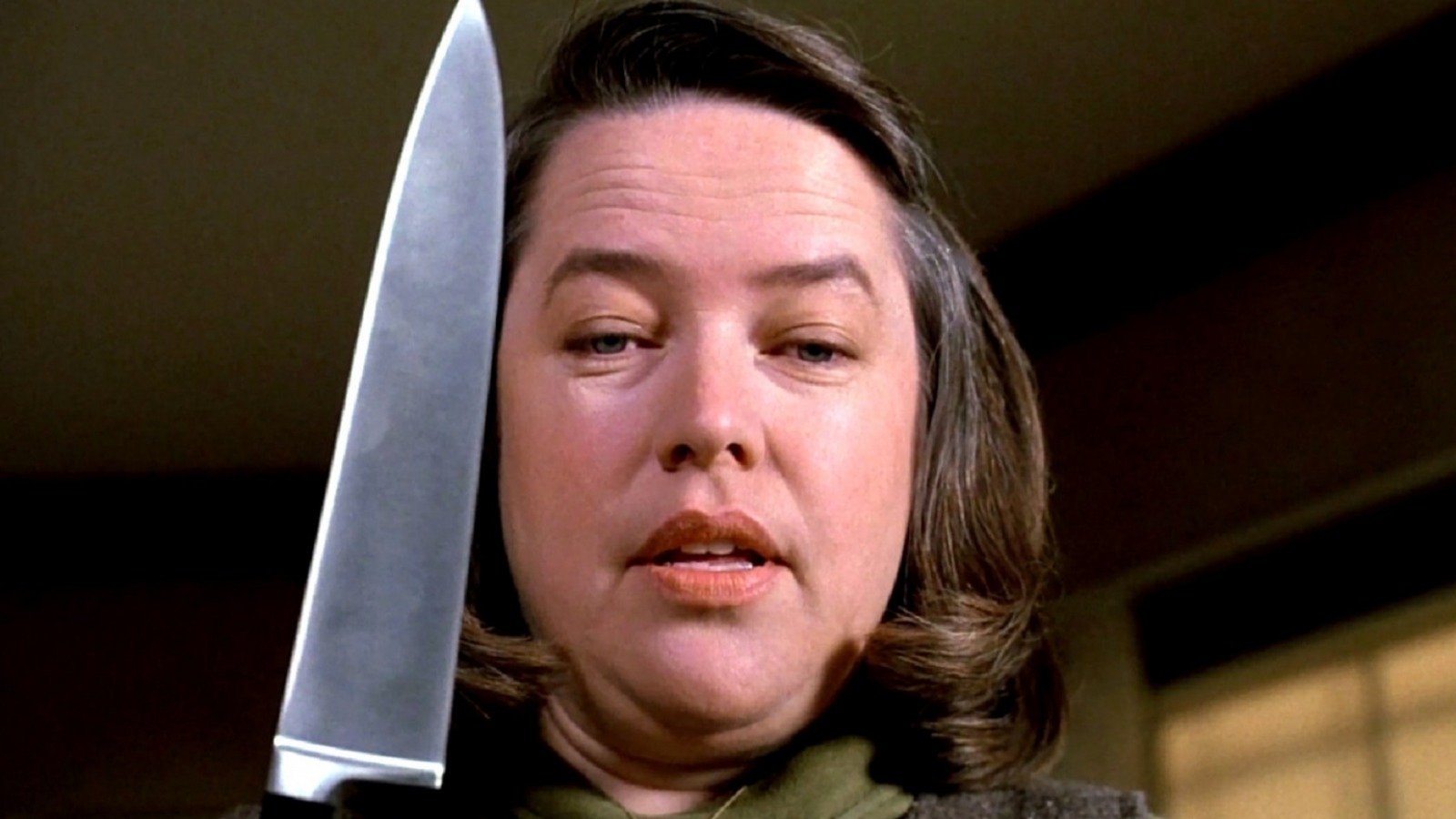
A simple story of a crazed fan gone too far, Rob Reiner brought to life every celebrity’s worst nightmare, as well as his second King film, just four years after his now celebrated masterpiece, “Stand by Me”. James Caan’s crippled writer being slowly mended/driven insane by Kathy Bates’ Oscar-winning turn as Annie Wilkes: the twisted fangirl, is enough to keep anyone enthralled, despite the intentionally sleepy pace. The pair have an undeniable chemistry that can range from halfway-genuine kinship, to blatant hatred and disdain for one another. Kathy Bates relishing in her maniacal role is worth the price of admission alone, and James Caan’s sincere performance acts as the perfect way for the audience to connect into the story, through his realistic portrayal of a man in a depressingly hopeless situation.
Related Read: The Viewer in Kubrickland: Solving Stanley Kubrick’s Hermeneutic Labyrinth
Reiner’s simplistic direction perfectly encapsulates the realism of the circumstances, putting the viewer in the same inescapable desperation of the main character – with the quiet dread making for a nice contrast to Bates’ unhinged acting. An absolutely essential horror-thriller of the ‘90s and an understated masterclass in acting, “Misery” is a true classic. A slow-burning psychological-thriller, broken up by startling spurts of insanity, rage, and violence; Reiner delivers yet another iconic piece of filmmaking out of King’s imaginative material.
9. It Chapter Two (2019)
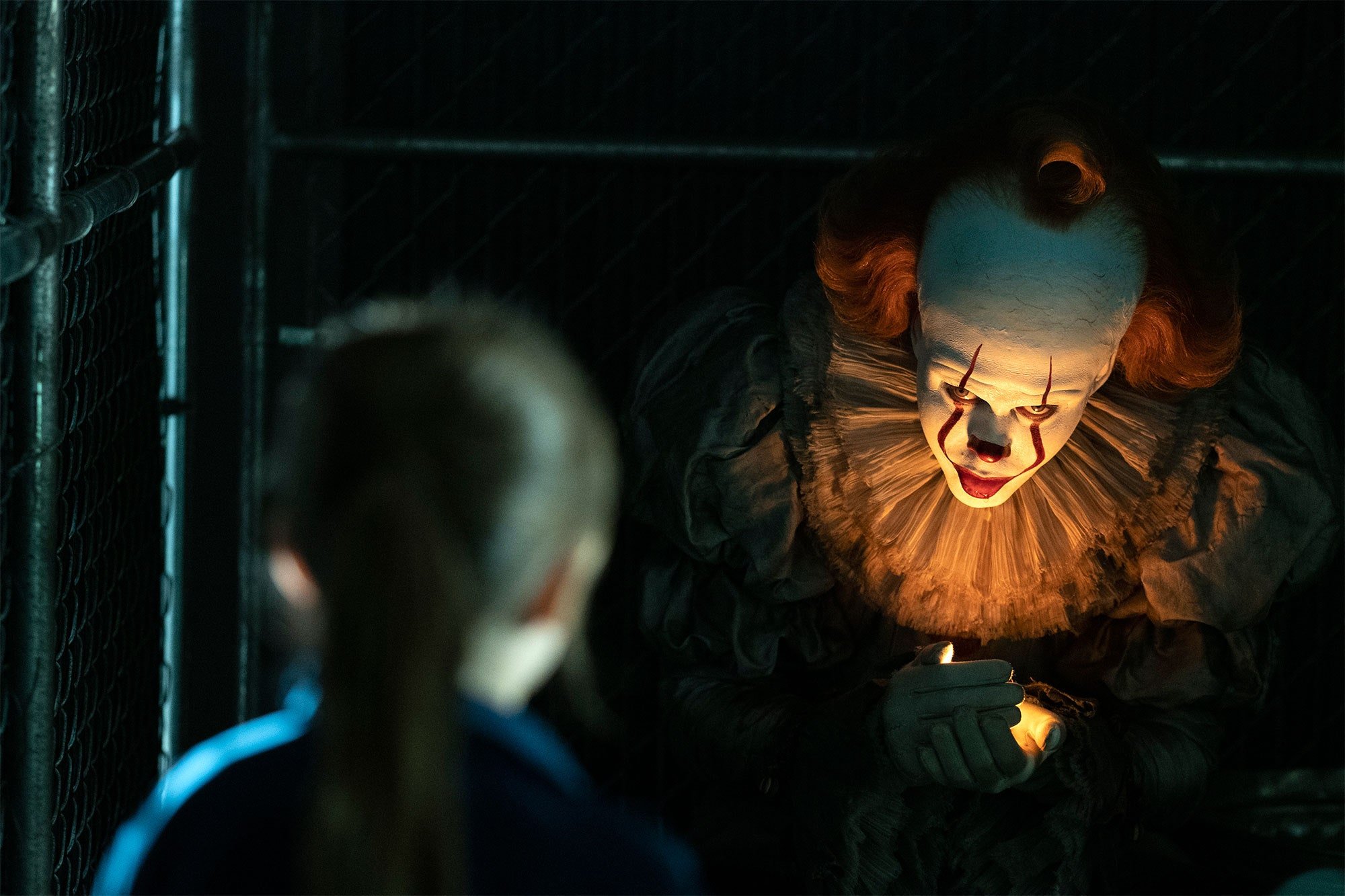
Following up the first “It” film (higher on the list) by breaking up King’s mammoth of a novel into two separate parts, Andy Muschietti tackles the return to Derry with an all-star ensemble, and a much larger scope. Bill Skarsgård reprises his role as Pennywise, and is just as sinisterly charismatic as before, but the main standouts are the adult cast of the Losers’ Club, who all knock it out of the park; with the great James McAvoy, Jessica Chastain, and Bill Hader, all lighting up the screen with ease.
Also, Read: It Chapter Two (2019): A Thunderously Messy Piece of Big Blockbuster CGI
Despite some of the pacing issues and, at times, ugly use of CGI, Muschietti expands upon the world he introduced in “It”, while once again showcasing his flare behind the lens; leaning into the visual storytelling of King’s novel, as well as demonstrating his clear understanding of the story’s tone. Unfortunately, “It Chapter Two” does suffer from the same issues as King’s novel. The adults facing off against the devilish Dancing Clown is inherently less scary, and the final confrontation is just as unsatisfactory as every iteration. However, don’t let that detract from what Muschietti and company accomplish with this film. An outstanding cast, some truly memorable/original scenes, and an earned emotional climax, all make for a fitting conclusion to this long-awaited saga.
8. Christine (1983)
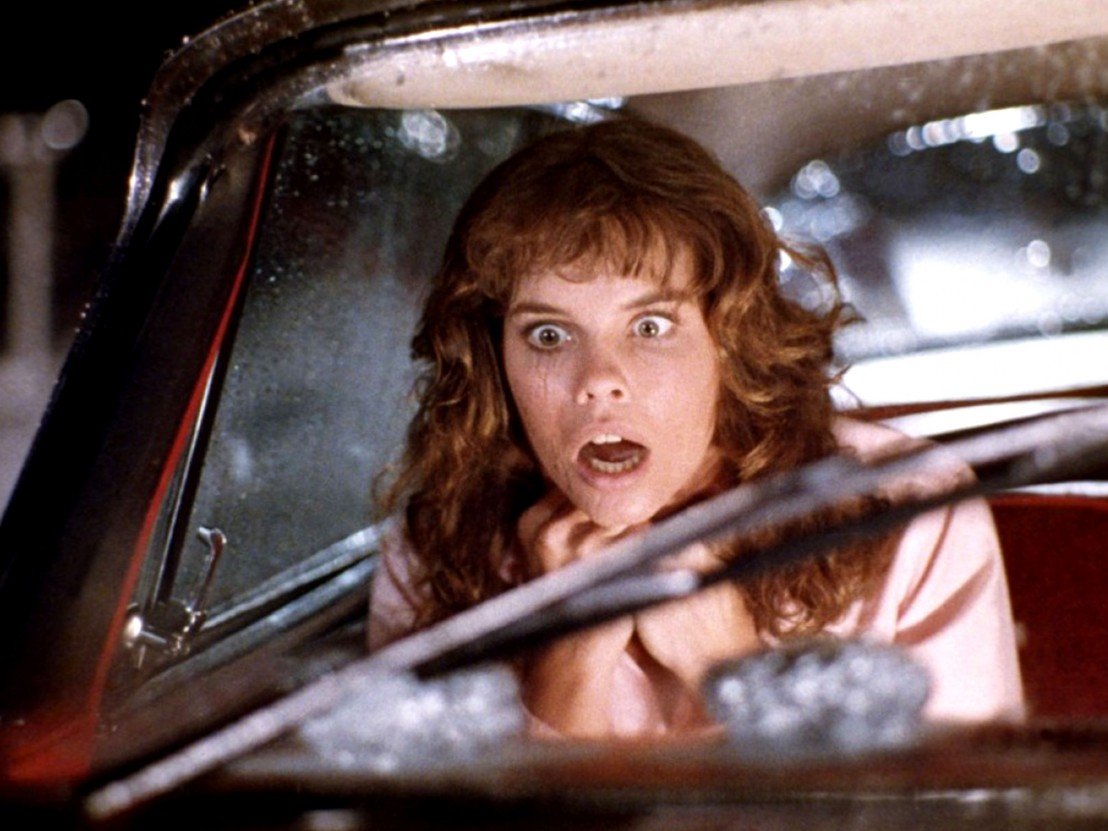
A classic-rock-infused marriage between two absolute masters of the horror genre, John Carpenter’s “Christine” is one of the most remarkable timestamps in horror history. King’s simplistic killer-car story lends itself beautifully to Carpenter’s vision, with the director’s sense of bare-bones suspense being a trademark of his. Helmed by a delightfully hammed-up performance by Keith Gordon as Arnie: the nerdy kid gone bad, and John Stockwell’s conflictingly straight-laced performance as Arnie’s best friend Dennis, the story is a clever allegory for the freedom and responsibility of owning your first ride, but with a ghastly twist.
Related Read to Stephen King Film Adaptations: Why The Oscars Need To Start Recognising Horror Films
King’s outlandish writing is held in check by Carpenter’s sardonic sensibilities, as the tone works to perfection to craft not only a uniquely fun slasher, with a murderous car at the forefront, but also a legitimately tension-filled movie. Carpenter’s ominous filming of the car itself also leads to an interesting mystery in its own right, with the audience having to decide who was behind the wheel; adding yet another layer of intrigue to the film. Delivering on all of the legendary filmmaking of Carpenter, with the score and cinematography enhancing King’s work tremendously; as well as all of the exciting storytelling from the prolific author himself, “Christine” is an early ‘80s classic.
7. The Green Mile (1999)
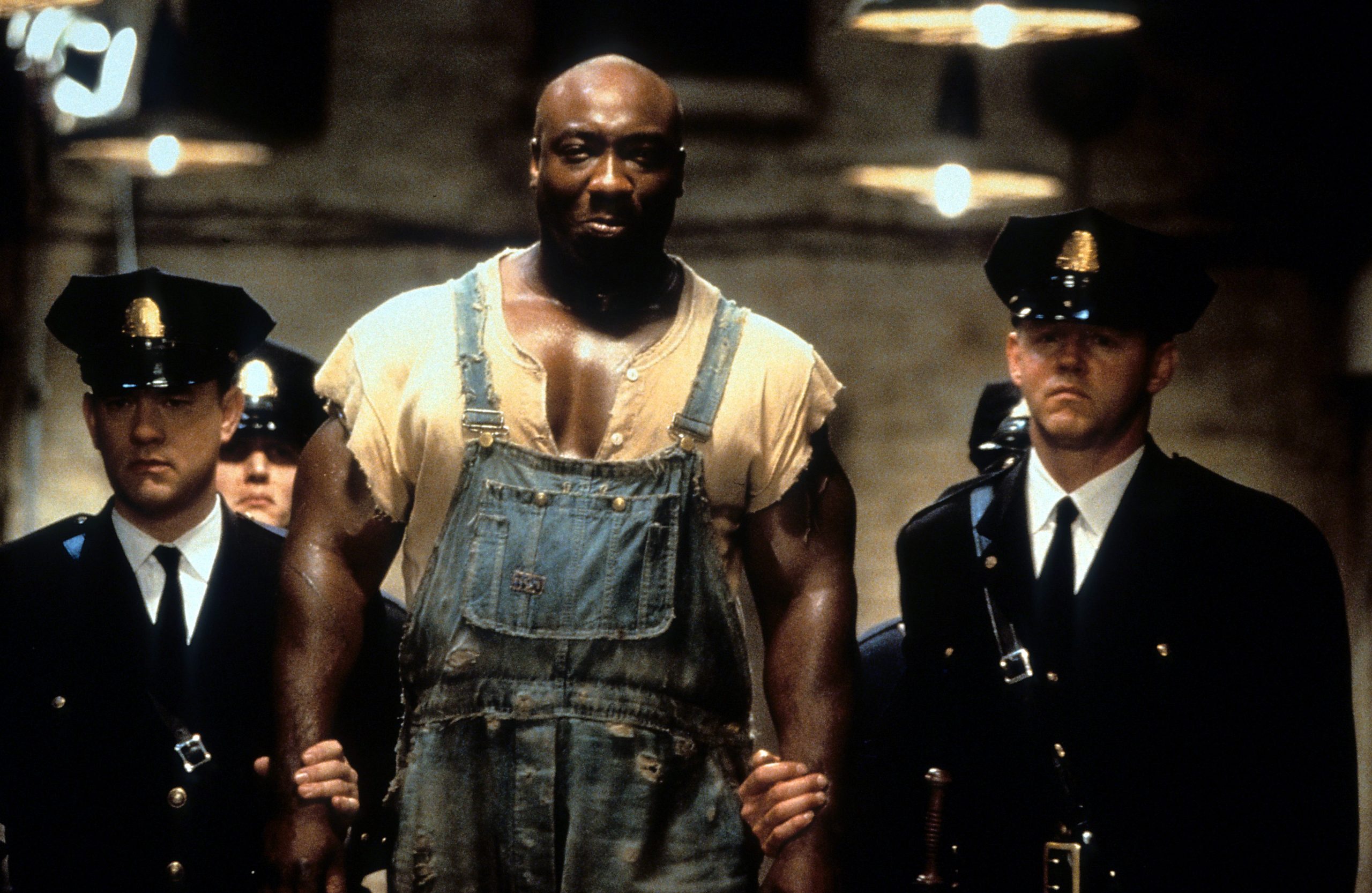
Proving once again after his success adapting “The Shawshank Redemption”, that he can direct a Stephen King drama better than anyone, Frank Darabont delivered another classic; this time adapting King’s serial novel of the same name, “The Green Mile”. Darabont’s knack for bringing King’s more serious, dramatic material to life (this time with a touch of fantasy), will forever be unmatched; but it is the brilliant casting of Tom Hanks and the late Michael Clarke Duncan that elevates this film to classic status. The two completely embody their characters, with Michael Clarke Duncan even being nominated for an Academy Award following his pitch-perfect portrayal of the tragic John Coffey.
Also, Read: 25 Years of The Shawshank Redemption: A Film About ‘Hanging In There’
The film is captivating from start to finish, as we follow a large, hopeless man, through his time on death row, as the mystery is unraveled that he may be innocent. The extended length of the runtime, compared to other King adaptations, opens up plenty of room to explore virtually every segment of King’s novel; giving this heartbreaking story of justice, wrongful conviction, and the supernatural, the time and attention that it deserves. While the film can never quite match the profound emotion of its source material, Darabont’s attention to detail and natural feel for King’s work shine through, wonderfully.
6. Pet Sematary (1989)
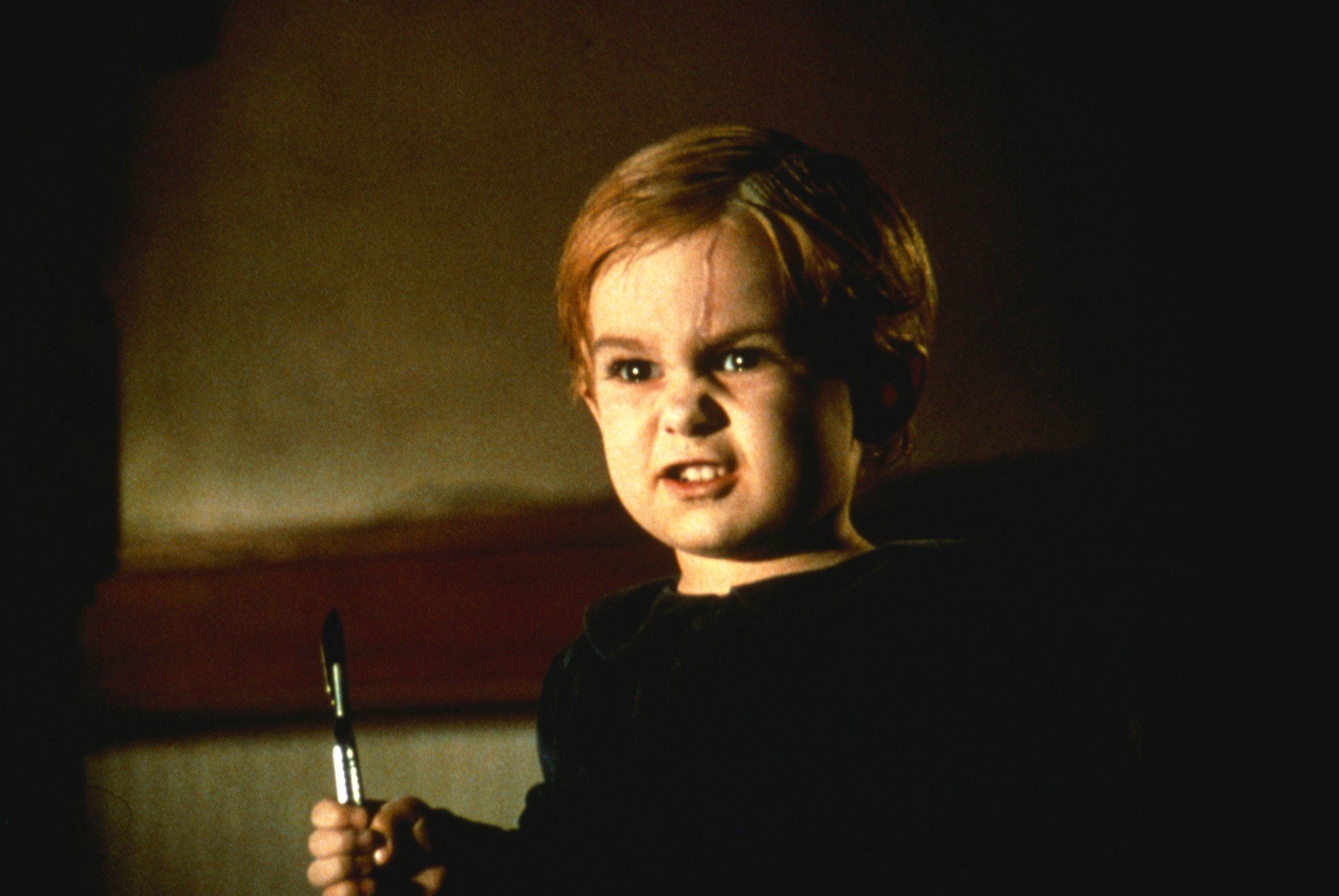
Drawing from one of King’s most famously grim novels, Mary Lambert adapted “Pet Sematary” into one of the most beloved horror films of the ‘80s, using some morbidly macabre sets, and a relentlessly gloomy atmosphere. Following a grieving father (Dale Midkiff), allured by the chance to bring his infant son back from the dead, Lambert touches on every major event from King’s novel, flawlessly. The film is a dark look into the impact and resulting effects that grief can have over an individual/family, posing a moral question as old as time, of how far one might go to preserve a loved one.
It is a bold, unforgiving story, presented in a fantastical way that could only be from the mind of Stephen King, and Mary Lambert portrays his ideas very well on screen. Every scene works to ramp up the escalating intensity of the story, and the end result is a chilling piece of cinema. Though the film rarely evokes the same raw emotion of King’s timeless novel, this 1989 imagining is about as precise an adaptation as one could hope for in the world of book-to-film translations; and though it isn’t quite the masterpiece King’s novel is, Fred Gwynne’s performance as Jud Crandall, along with some great makeup effects, help to make this a standout horror film in and of itself.
5. Carrie (1976)
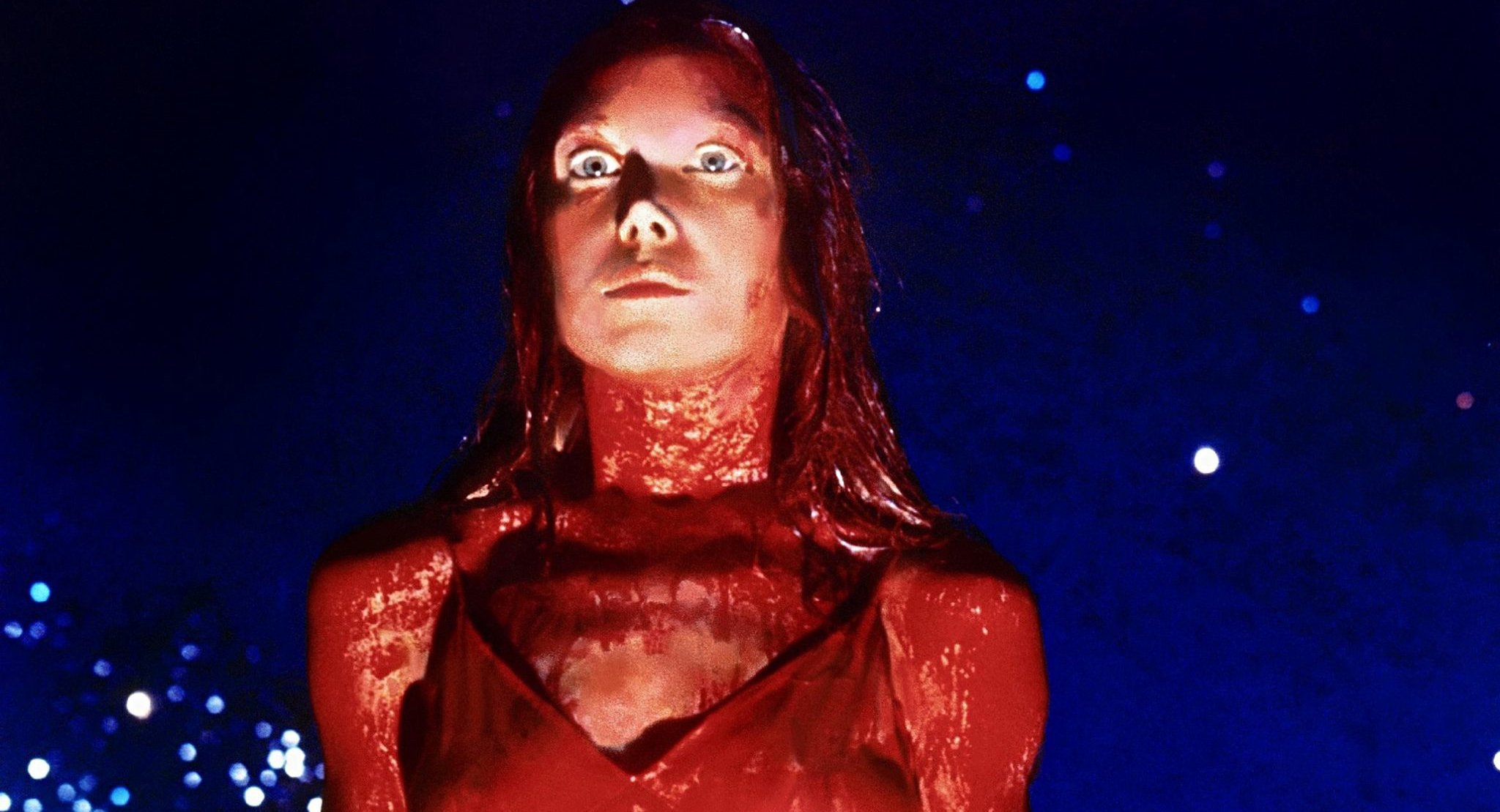
The very first Stephen King story adapted for the silver screen is still one of the finest. A classic in every sense of the word, Brian De Palma’s “Carrie” continues to shock and frighten audiences to this day. Constantly cited as one of the greatest movies of the ‘70s, the film is more than just a supernaturally-charged study of a troubled individual, but also a true cautionary tale about bullying that viewers are likely to never forget. An outcast revenge-tale that becomes sadly more and more relevant with time, this is a horror story with something to say, and it proves its point in bloody fashion.
Related Read to Stephen King Film Adaptations: More Than Guts and Blood: Symbolism In Horror
The film also proves right from the start that King’s characters can translate into powerful performances, with two Oscar nominations for Piper Laurie and Sissy Spacek, respectively. The acting here is top-notch, with Spacek’s immaculate portrayal of Carrie being the selling point of the entire picture. De Palma’s legendary direction of the now iconic prom scene is utterly breathtaking, with the angelic tone of the prom, juxtaposed by the following carnage, leading to one of the most captivating scenes in all of film. An impeccable mastercraft of an adaptation, “Carrie” is one of the few King films that many would say improves upon its source material, and it’s hard to dispute.
4. The Shawshank Redemption (1994)

A lightning in a bottle cult-classic worthy of the highest praise, Frank Darabont’s understanding of King’s work led to one of the most extraordinary crime-dramas ever put to screen. Endlessly inspirational, the film follows two men in prison (Tim Robbins’ Andy Dufrense and Morgan Freeman’s Red), and their painfully long path to freedom. Stunning cinematography from the incredible Roger Deakins, knockout performances from both Robbins and Freeman, and of course the brilliant character work of Stephen King himself, all mesh to amplify the faultless direction of Darabont. The way Darabont is able to convey so much magic and life in spite of the dull, bleak visuals of a prison, is awe-inspiring – with the starkness being heavily offset by the rich characters and magnetic dialogue.
Related Read: 10 Films To Watch If You Like The Shawshank Redemption
Of course the story itself is the main draw, with ordinary, mundane prison life, being shaken by the innocent Andy Dufrense’s unwavering poise and belief that he will one day be free, making for one of the most enjoyable and ultimately satisfying journeys to ever come out of a film. Much like King’s novella, Darabont and company prove that The King can spin more than just spine-chilling tales, by delivering a wonderfully uplifting message of hope in the darkest of places. A congenial fan-favorite of moviegoers and King aficionados alike, “The Shawshank Redemption” is a cinematic feat for the ages.
3. It (2017)
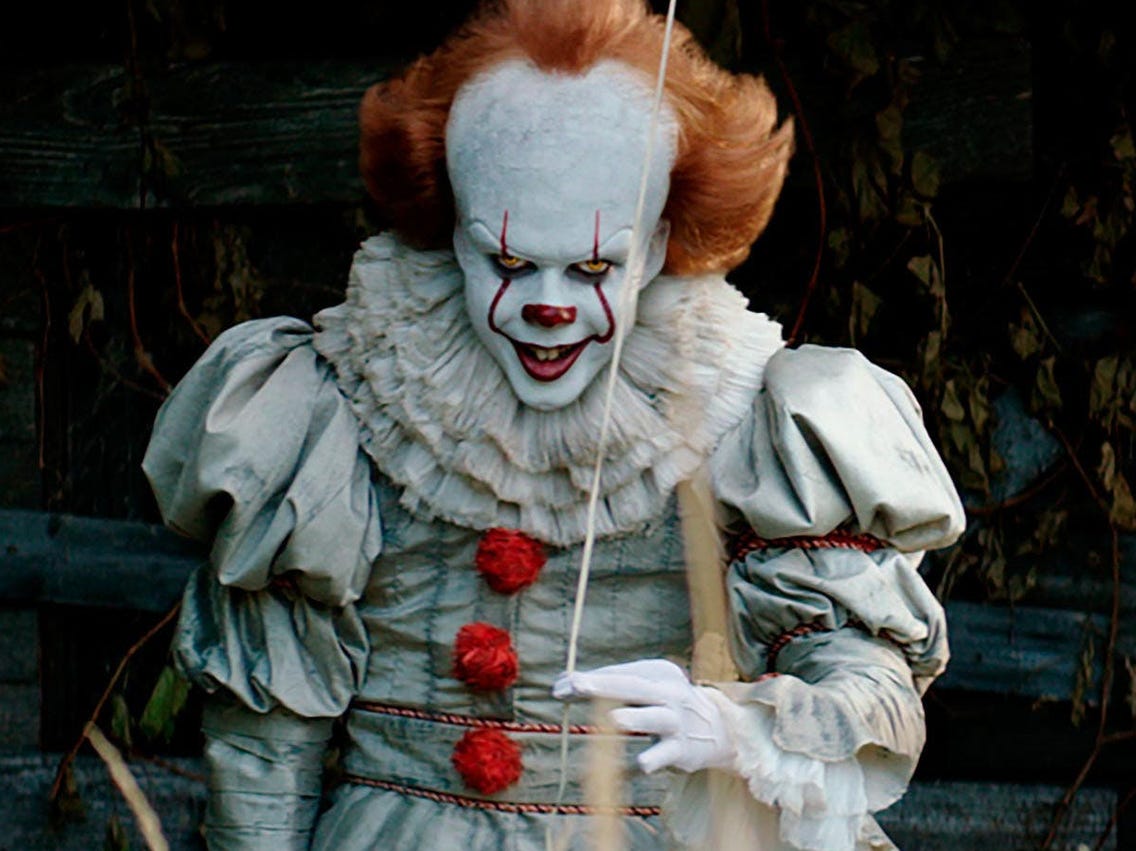
An ancient child-eating entity inhabiting a small town, and a group of kids forced to defeat it. It doesn’t get any more Stephen King than that. Following a pretty weak effort to adapt King’s lengthy classic in the early ‘90s, the novel was begging for a newer, bigger, more serious adaptation; and Andy Muschietti’s ambitious passion-project turned out to be the right fix. In many ways revitalizing the horror genre with massive box office success and an immediate fan-following, “It” was an inescapable phenomenon. Scaling down the story for the opening chapter of the enormous two-part epic, while paying homage to the book by scattering plenty of references, Muschietti tells a contained, Spielberg-esque tale of kids versus a supernatural force, as well as their own personal fears.
Related Read: Stephen King’s It (1990): Poorly Executed. Terribly Dated. Downright Forgettable
The story is inherently fun, scary, and moving, with the decision to set the film in the ‘80s, as well as the addition of a healthy dose of humor, leading to a more fresh interpretation of the original text; setting it apart from both the novel and mini-series, as truly something new. Balancing the horror and drama with an overwhelmingly intense small-town atmosphere, the tone is spot on, and never lets up. Supported by stellar child-acting all around, as well as an instantly iconic outing from Bill Skarsgård as Pennywise, Muschietti’s introductory chapter to one of the most beloved horror stories ever told is certainly future classic.
2. Stand by Me (1986)
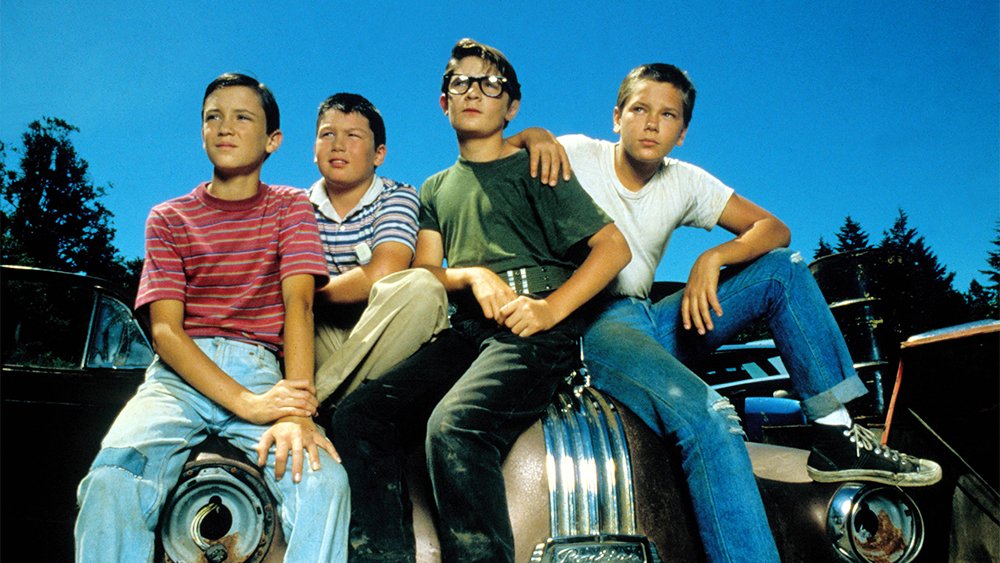
Displaying King’s brilliant knack for writing kids, Rob Reiner brought this adolescent adventure-drama to life, and made the definitive coming-of-age film. Following a group of four young boys on their morbid quest to discover a dead body, Reiner’s timeless classic chronicles the boys’ loss of innocence, and the universal fear of leaving childhood behind. King’s sentimental writing explores the harsh realities of growing up, as well as the feeling of moving on, brilliantly. Every moment is something special and nostalgic, as you feel a growing bond and sense of relatability with each of the four boys. Each young actor plays their character to jaw-dropping perfection, with the chemistry making for the most authentic portrayal of young friendship, ever put to screen.
Related Read to Stephen King Film Adaptations: 15 Must See Coming Of Age Films of 2020
The dialogue from the kids can range from energetic and exciting, to hilarious, to downright heartbreaking, and all of it works because of how genuine every moment feels; a huge testament to both the writing, and the seemingly effortless acting. All of this, showcased by Reiner’s ability to capture and convey the essence of childhood adventure through the lens, make “Stand by Me” an unfathomable paragon in filmmaking. Kiefer Sutherland’s imposing presence as the villainous Ace Merrill, Richard Dreyfuss’ transportive narration, and a magnificent ‘50s period-piece soundtrack, all elevate this masterpiece, and help to cap off a bittersweet gateway back into the wonder years.
1. The Shining (1980)
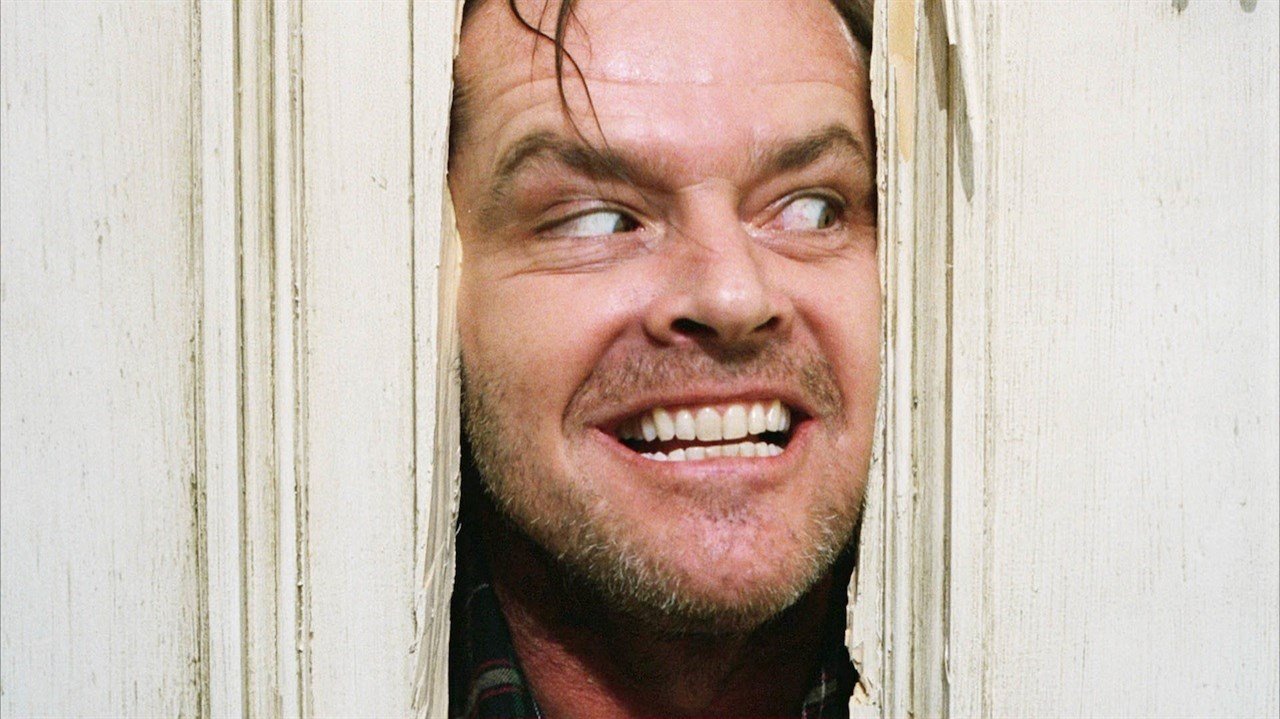
A cold, slow moving psychological-thriller in the hands of the legendary Stanley Kubrick, “The Shining” very may well be the greatest accomplishment in all of horror cinema. An eerie study on the effects of alcoholism and isolation, through the eyes of a haunted-hotel ghost story, Kubrick captures an ongoing and ever-increasing sense of paranoia and despair through his masterful direction, and King’s disturbingly fascinating text. The steady descent into madness that the viewer experiences through Jack Nicholson’s otherworldly performance as Jack Torrance, is unrivaled in the art of horror films. We watch as a family crumbles, and a man is driven insane and slowly consumed by his own past vices, cleverly disguised by the unforgettable Overlook Hotel.
Related Read: Stanley Kubrick: Placing Gender Within Kubrickan Framework
It is very well documented that King himself is not a fan of Kubrick’s interpretation, but there is just no getting around how well Kubrick handles this story. His direction is astonishing, and the themes of alcoholism and corruption are never once lost. The debate of whose version of the story is better will go on forever, but Kubrick’s has it all, and you have to appreciate the blending of two creative geniuses. Boasting undying imagery, as well as the uncontained creativity of King, contrasted by the refined, deliberate iciness of Kubrick; this incredible mind-bender is one of the most exceptional triumphs in all of filmmaking.

